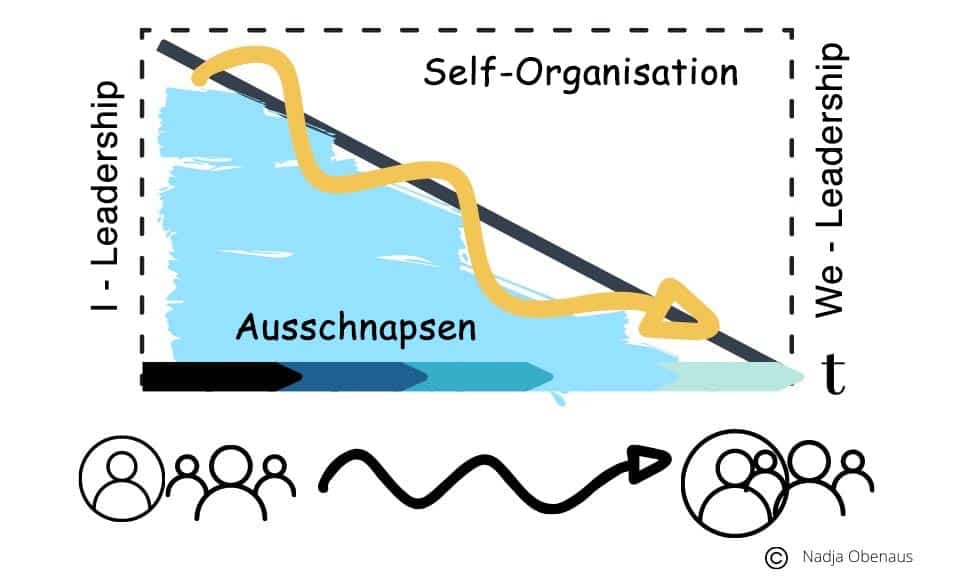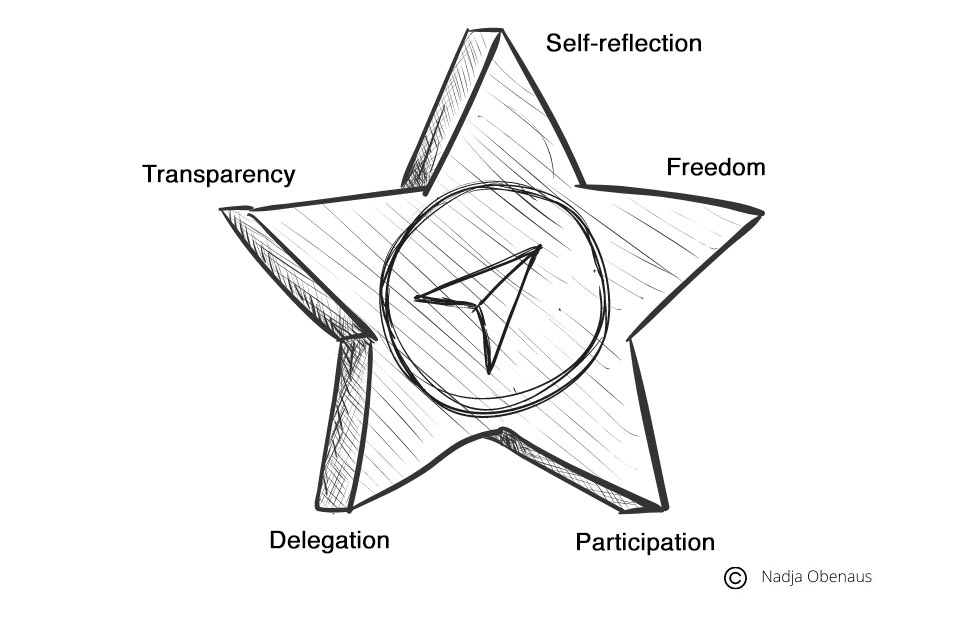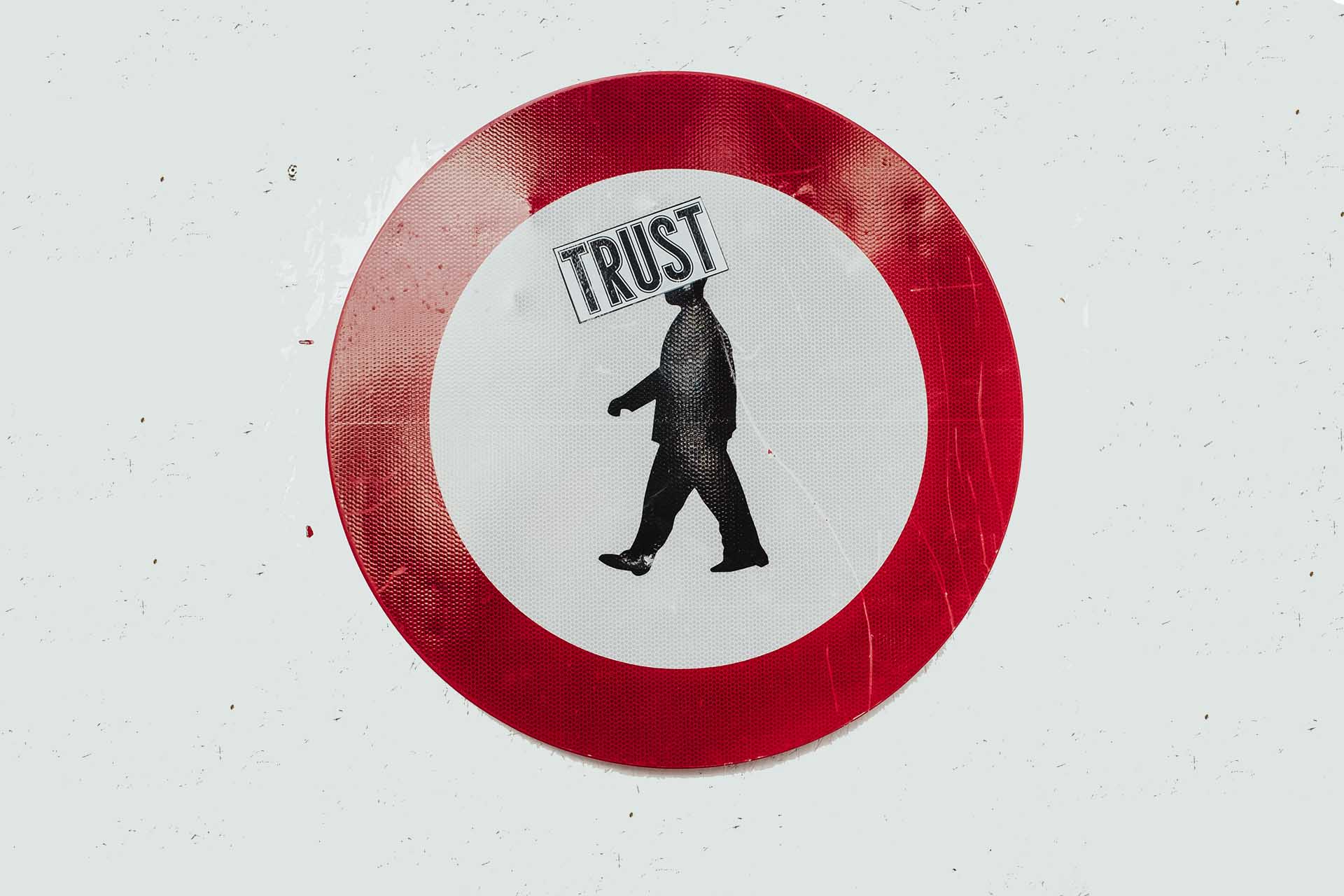How to negotiate leadership
Table of Contents
What are the parameters for self-organisation
The leadership role in self-organisation
1. Food for thought: “Be part or the game” – Reflect
2. Food for thought: “I’m free to be whatever I…” – Allowing autonomous action
3. Food for thought: Participation – Finding common ground
4. Food for thought: Transparency – Playing with open cards
5. Food for thought: Delegation – “House of cards”
All in: Take of your poker face and become a team player
Food for thought for collaborative leaders and more self-organisation in teams
The other day a coachee from Austria told me about a problem that currently keeps her awake until late at night. The organisation in which she works as a team leader is still in its infancy when it comes to Agile Transformation, and so she is currently facing the same problem that concerns leaders in many places. Under the pressure of the ongoing pandemic, it is more necessary than ever that decisions are made quickly and above all where competence and expertise lie. Indeed, self-organised working is not only enshrined in the Agile Manifesto1 – its advantages are also clear.
My exhausted coachee asked me if I had an idea how she could best break out with her team, when who takes what decisions, i.e. how she could give responsibility to the team in order to increase the degree of self-organisation in her team.
Note: The coachee actually used the term “ausschnapsen”. As a term it’s almost unknown in most parts of Germany. In Austria, “Schnapsen” is a game and “ausschnapsen” means to negotiate or agree on something. For this, as with almost every card game, you need a common table. And this can also be created in virtual space.
“You need to sit at the table, to be part of the discussion.”
I would like to emphasise at this point that I am writing this article for leaders who have already been able to work agile and build a solid base of trust in the team. But who are wondering how, under the changed conditions or rules of the game, they can give more responsibility to the team without imposing it on them. That is why they are thought-provoking impulses for testing and trying out, for playing without great risk – and no guarantee of success.
What are the parameters for self-organisation?
In the coaching session mentioned above, we first of all recalled the parameters that allow self-organisation to develop in the first place. The Duden says: “Spontaneous emergence, formation from within, without external factors”. In my opinion, the Duden fails to mention the most important part: the principles of order or the boundary conditions. Because without certain rules of the game, self-organisation is not possible. This is no different with the natural model. Crystals are not only formed by chance, the arrangement and interaction of the molecules is due to a discrete order.2 The principles of order and laws of nature or boundary conditions apply. In this sense, one of the parameters of self-organisation is that it arises spontaneously without external intervention. Another is that it follows a certain order and at the same time remains open to emergence.
“When several people are together, we do not simply have an accumulation of individuals: something new, something different emerges, which obeys its own laws. (Dr. Elmar Teutsch)
The leadership role in self-organisation
Let’s go back to the initial question: How does the management succeed in meeting the challenge of more self-organisation, while at the same time increasing the distribution of the team? If we follow the Duden definition, the question arises where the leadership is located. Outside or inside or is it even becoming obsolete? To get closer to these questions, we start with your own understanding of leadership. After all, who makes the rules of the game if you as a leader do not make them?
The team does. With each round of “ausschnapsen”, the leadership function is transferred more and more into the team and the degree of self-organisation is continuously increased. This is the theory.
To help you get there in practice, I have brought you the following 5 food for thought, each with an exercise.
Because more self-organisation in the context of agility does not mean leaving the team to its own devices and pulling itself out completely as a leader. Having an agile mindset means regularly questioning and reflecting on yourself and your actions. Also as a leader and especially with regard to one’s own part.
1. Food for thought: “Be part of the game” – Reflect
More self-organisation starts with the self. Self-reflection is the first step that you as a leader can practice in the challenge to more self-organisation.
It is helpful to ask yourself what role you want to play. The Scrum roles of pig and chicken, which are rarely mentioned today because somehow nobody likes to be called a pig, are said to be based on a joke by Scrum co-founder Ken Schwaber. According to this joke a pig and a chicken wanted to open a restaurant together. The chicken suggested putting Ham an’ Eggs on the menu, but the pig rightly objected that the chicken would only be involved while he, the pig, would make a real commitment. The reason for this is obvious.
“To have skin in the game means that you have a personal stake in the outcome.” Warren Buffett
It is primarily about the mindset. Do you want real participation and commitment? Then don’t demand anything from your team that you yourself are not prepared to do. If the team continues to train and make more decisions, you can use the time you have gained to train yourself.
1.1. Exercise: “Put your hands together”
You and your team can have one hand per person traced on a large poster and each person writes his or her own share. In relation to the goal you have set yourself: more self-organisation, transferring responsibility to the team (the WHAT you first brought into the team). You are now allowed to write down what your part in this is. In other words, what each individual contributes to achieving the goal. Perhaps you will finish the article first, then you will certainly be bubbling with ideas. 😉
2. Food for thought: “I’m free to be whatever I…” – Allowing autonomous action
At this point we can venture an (intellectual) advance. This is primarily about the freedom of the individual members in the self-organised team. After all, we must not forget that self-organised teams do not exist in a vacuum, but follow a discrete order. They are integrated into more or less agile organisation contexts, where the CEO sits at the end of the flagpole and determines the company’s goals and the big WHAT.
So autonomy yes, absolute freedom no. But only those who are free can develop their potential to the full. And here we are again with self-reflection and further training. There can be a beginning: Maximum freedom in the further education budget through leadership (e.g. Spanish course without Spanish clients).
For me, freedom means saying “no” to constraints and “yes” to opportunities.
2.1. Exercise: “Making your own move”
Take a pen and a sheet of white paper. List the decisions you have made in the last few months that have made you feel it is your turn. How did it feel to be able to do tasks in a self-determined way? Discuss in a team how each person feels about it and how autonomously each person wants to work. One question you can put to the team is: “How can it be that we are both integrated and autonomous in our current actions?”.3
3. Food for thought: Participation – Finding common ground
This food for thought is also about commitment. But not from outside into the team, but within the team. What is the lowest common denominator? A goal with which all participants can identify. The team jointly determines HOW and that also means showing interest and appreciation for the suggestions and ideas of the others. Leadership also means taking part in the discussion of controversial points, identifying commonalities and, if necessary, specifying requirements.
3.1. Exercise: Embodied Resonance
There are actually very simple physical exercises that can help us improve our well-being, our own mindset and our reaction to others in seconds. This is why we can also influence our feelings through our posture.
Try the following improvisation: “Oh yes! practice”- accept offers even if it seems unfamiliar at first. Feel how your body language changes and what this means for your attitude.
All in all it is a good exercise to reflect on your own body language. Especially in the context of virtual conversations. You can maintain eye contact in virtual meetings and agreements and thus show that you have understood your counterpart. See what kind of feedback you get.
“When the values of commitment, courage, focus, openness and respect are embodied and lived by the Scrum Team, the scrum pillars of transparency, inspection and adoption come to life and built trust for everyone.” The Scrum Guide
4. Food for thought: Transparency – Playing with open cards
As a leader, you normally determine WHAT, but that does not mean that this is not negotiable with the team. The most important thing here is to enter into an open dialogue and make the WHAT transparent. In this way the team gains trust and you as a coach become part of the team and part of the inside.
“Model to build dialog.”
4.1. Excercise: Backlog handling
To describe WHAT with the team and to visualise what is said is a management task. Supplement your visual dictionary4 on a daily basis and enrich the iterative development of the backlog in the team with a jointly generated image. This also pays into the common ground account of the team.
5. Food for thought: Delegation – “House of cards”
Are you ready to let go and take the risk? If so, then the first condition for “more self-organisation” would be fulfilled: to actively let go of the commitment and want to give up leadership. But the other side of the coin is that the team also wants to take on this responsibility.
In my work I often meet team members who have never learned to deal with responsibility and are often even afraid of the consequences of their decisions. Leadership here means to create a psychologically safe framework so that more decisions are made by these colleagues and a joint reflection of the consequences. Yes, this is a challenging but also exciting challenge that takes time and leisure – but is worth it. The moment we talked about “ausschnapsen”, I remembered the delegation poker again. Because delegation also needs to be practised.
5.1. Exercise: “Delegation Poker”
This game, designed by Jurgen Aleppo, offers a playful way of exploring the different stages of delegation of decisions. The team is to be empowered through different levels of delegation to become more self-organised and self-responsible. Here you can find detailed instructions.
This way of negotiating decisions in a team in a playful way relieves the burden on the manager, the teams and last but not least the individual team members. Of course it is important that everyone has fun playing the game. 😉
All in: Take off your poker face and become a team player
Back to my coachee. Her wish was to hand over more responsibility to the team in order to increase the level of self-organisation. A challenging task for all involved.
From my experience as an Agile Coach and Scrum Master, I can say that the practice for more self-organisation often fails at the last point, the delegation and the attitude of the leader and individual members. The first important step is therefore to reflect on your own understanding of leadership and the last step is to want to delegate leadership.
Negotiation takes place in between. It is a balancing act that you can imagine as a kind of slider. The stronger the common ground, the commitment, the more transparency and the will to distribute leadership on different shoulders, the more self-organised and faster the team is. At the beginning is the “I-leadership” at the other end is the “We-leadership” (see 1. chart).
I also find the idea with the joint challenge important. The challenge (the WAS) is of course also determined by the product owner. But the WHAT, accepting the challenge and committing to it is a team matter.
So what are your tasks as a leader?
- Accompany,
- Develop,
- Coaching.
In this context, the idea of Servant Leadership, which redefines the role of leadership in Agile Leadership, also fits in: Leadership now plays a servant, subordinate role. The leader in his or her role as Servant Leader supports and serves the team in such a way that the team is able to carry out its tasks in a self-organised manner in order to implement the WHAT in the best possible way.5
If you are seriously prepared to get involved in the game, to take off the poker face and commit as part of the inside and become a team player, you can hand over responsibility to the team, where, following a discreet order, the team will settle in, self-organised and distributed. In this game, everyone takes the lead.
And when it’s not your turn, you keep the overview, avoid chaos, create the framework for spontaneity and emergence. Create optimal conditions for a high-performance team, so that each individual can develop his or her greatest effectiveness. Through a discrete order that is both self-sustaining and flexible. However, your most important task as Servant Leader is simple: to be there.
“Your best ability is your availability.”
After all, autonomous driving does not mean that the driver is not present. 😉
Have fun practising and if you would like to share your findings with me, I look forward to hearing from you both personally in conversation and virtually, just as you wish.
Best regards,
Nadja Obenaus
Notes (mostly in German):
Do you deal with the topic of leadership? Do you want to learn sustainably with your organisation and at the same time enable teams to deliver quickly?? Then Nadja Obenaus will be happy to talk to you.
[1] Agile Manifesto
[2] https://teamworks-gmbh.de/6-regeln-fuer-die-selbstorganisation-von-teams-nach-prinzipien-der-natur-laufen/ (retrieved on 16.11.20)
[3] https://liberatingstructures.de/integrated-autonomy/ (retrieved on 16.11.20)
[4] https://www.visualdictionaryonline.com/communications.php (retrieved on 16.11.20)
[5] https://www.agile-academy.com/de/scrum-master/servant-leadership-wie-funktioniert-fuehrung-im-agilen-kontext/ (retrieved on 16.11.20)
Nadja Obenaus has published three more posts in the t2informatik Blog:

Nadja Obenaus
Born in Styria, she is a passionate triathlete and when she is not involved with the children at Weekendschool Germany, she prefers to cycle through her adopted home of Hamburg.




